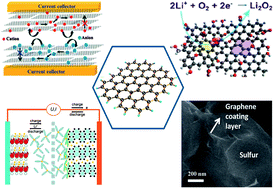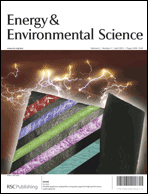
We would like to share with you a selection of very recent high impact articles, published in Energy & Environmental Science covering the range of applications of flexible nanotechnologies in the fields of energy and the environment.
On behalf of Editor-in-Chief Nate Lewis (Caltech) we invite you to submit your best research to Energy & Environmental Science.
Energy & Environmental Science ranked #1 in its field. With an Impact Factor of 9.61, which is rising fast, it the ideal place to publish your research.
Read this high-impact flexible nanotechnology research today (some of which is free to access for a limited period):
Reviews and Analysis
FREE: Energy and environmental nanotechnology in conductive paper and textiles
Liangbing Hu and Yi Cui
DOI: 10.1039/C2EE02414D
FREE: Stretchable, elastic materials and devices for solar energy conversion
Darren J. Lipomi and Zhenan Bao
DOI: 10.1039/C1EE01881G
FREE: Progress in Flexible Energy Storage and Conversion Systems, with a Focus on Cable-Type Lithium-Ion Battery
Sang-Young Lee, Keun-Ho Choi, Woo-Sung Choi, Yo Han Kwon, Hye-Rnn Jung, Heon-Cheol Shin and Je Young Kim
DOI: 10.1039/C3EE24260A
FREE: Nanostructured solar cells harvesting multi-type energies
Liang Li, Shimou Chen, Xuebin Wang, Yoshio Bando and Dmitri Golberg
DOI: 10.1039/C2EE03226K
Original Research
FREE: Carbon coated textiles for flexible energy storage
Kristy Jost, Carlos R. Perez, John K. McDonough, Volker Presser, Min Heon, Genevieve Dion and Yury Gogotsi
DOI: 10.1039/C1EE02421C
FREE: Flexible energy storage devices based on graphene paper
Hyeokjo Gwon, Hyun-Suk Kim, Kye Ung Lee, Dong-Hwa Seo, Yun Chang Park, Yun-Sung Lee, Byung Tae Ahn and Kisuk Kang
DOI: 10.1039/C0EE00640H
FREE: Biodegradable Transparent Substrates for Flexible Organic-Light-Emitting Diodes
Hongli Zhu, Zhengguo Xiao, Detao Liu, Yuanyuan Li, Nicholas J. Weadock, Jinsong Huang, Liangbing Hu and Zhiqiang Fang
DOI: 10.1039/C3EE40492G
Fabrication of flexible all-inorganic nanocrystal solar cells by room-temperature processing
Anna Loiudice, Aurora Rizzo, Giulia Grancini, Mariano Biasiucci, Maria R. Belviso, Michela Corricelli, M. Lucia Curri, Marinella Striccoli, Angela Agostiano, P. Davide Cozzoli, Annamaria Petrozza, Guglielmo Lanzani and Giuseppe Gigli
DOI: 10.1039/C3EE23928D
A novel wrap-around metal contact optimized for radial p-n junction Si wire solar cells
Sunmi Shin, Jin-Young Jung, Kwangtae Park, Handon Um, Sangwon Jee, Yoonho Nam and Jung-Ho Lee
DOI: 10.1039/C3EE24494F
High-performance hybrid plastic films: a robust electrode platform for thin-film optoelectronics
Jungho Jin, Jaemin Lee, Seonju Jeong, SeungCheol Yang, Ji-Hoon Ko, Hyeon-Gyun Im, Se-Woong Baek, Jung-Yong Lee and Byeong-Soo Bae
DOI: 10.1039/C3EE24306K
TCO-free flexible monolithic back-contact dye-sensitized solar cells
Dongchuan Fu , Patrick Lay and Udo Bach
DOI: 10.1039/C3EE24338A
Thermopower enhancement in conducting polymer nanocomposites via carrier energy scattering at the organic–inorganic semiconductor interface
Ming He, Jing Ge, Zhiqun Lin, Xuhui Feng, Xinwei Wang, Hongbin Lu, Yuliang Yang and Feng Qiu
DOI: 10.1039/C2EE21803H
Polypyrrole-coated paper for flexible solid-state energy storage
Longyan Yuan, Bin Yao, Bin Hu, Kaifu Huo, Wen Chen and Jun Zhou
DOI: 10.1039/C2EE23977A
Flexible PEDOT electrodes with large thermoelectric power factors to generate electricity by the touch of fingertips
Teahoon Park, Chihyun Park, Byeonggwan Kim, Haejin Shin and Eunkyoung Kim
DOI: 10.1039/C3EE23729J
Integrated power fiber for energy conversion and storage
Yongping Fu, Hongwei Wu, Shuyang Ye, Xin Cai, Xiao Yu, Shaocong Hou, Hanny Kafafy and Dechun Zou
DOI: 10.1039/C3EE23970E
Oriented hierarchical single crystalline anatase TiO2 nanowire arrays on Ti-foil substrate for efficient flexible dye-sensitized solar cells
Jin-Yun Liao, Bing-Xin Lei, Hong-Yan Chen, Dai-Bin Kuang and Cheng-Yong Su
DOI: 10.1039/C1EE02766B
Inverted polymer solar cells with 8.4% efficiency by conjugated polyelectrolyte
Tingbin Yang, Ming Wang, Chunhui Duan, Xiaowen Hu, Lin Huang, Junbiao Peng, Fei Huang and Xiong Gong
DOI: 10.1039/C2EE22296E
A flexible nanostructured sulphur–carbon nanotube cathode with high rate performance for Li-S batteries
Guangmin Zhou, Da-Wei Wang, Feng Li, Peng-Xiang Hou, Lichang Yin, Chang Liu, Gao Qing (Max) Lu, Ian R. Gentle and Hui-Ming Cheng
DOI: 10.1039/C2EE22294A
Highly durable and flexible dye-sensitized solar cells fabricated on plastic substrates: PVDF-nanofiber-reinforced TiO2 photoelectrodes
Yuelong Li, Doh-Kwon Lee, Jin Young Kim, BongSoo Kim, Nam-Gyu Park, Kyungkon Kim, Joong-Ho Shin, In-Suk Choi and Min Jae Ko
DOI: 10.1039/C2EE21674D
Integrated energy storage and electrochromic function in one flexible device: an energy storage smart window
Kai Wang, Haiping Wu, Yuena Meng, Yajie Zhang and Zhixiang Wei
DOI: 10.1039/C2EE21643D
High-performance flexible lithium-ion electrodes based on robust network architecture
Xilai Jia, Zheng Chen, Arnold Suwarnasarn, Lynn Rice, Xiaolei Wang, Hiesang Sohn, Qiang Zhang, Benjamin M. Wu, Fei Wei and Yunfeng Lu
DOI: 10.1039/C2EE03110H
Plasma modified flexible bucky paper as an efficient counter electrode in dye sensitized solar cells
Soumyendu Roy, Reeti Bajpai, Ajay Kumar Jena, Pragyensh Kumar, Neha kulshrestha and D. S. Misra
DOI: 10.1039/C2EE03519G
For more information and news visit our website, or follow us on Facebook and Twitter
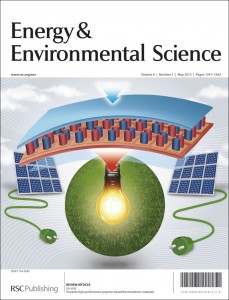 The latest issue of EES is now online. You can read the full issue here.
The latest issue of EES is now online. You can read the full issue here.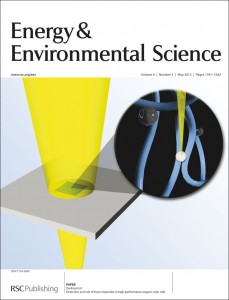 Issue 5 contains the following Review and Perspective articles:
Issue 5 contains the following Review and Perspective articles:










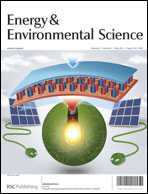 We would like to share with you a selection of very recent high impact articles, published in
We would like to share with you a selection of very recent high impact articles, published in 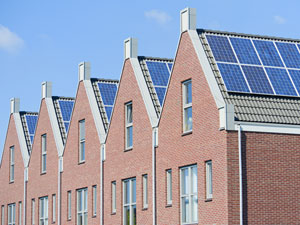

-429---NS_tcm18-221866.jpg)
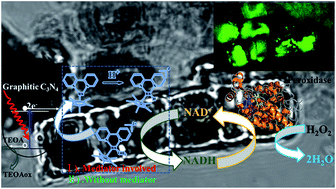
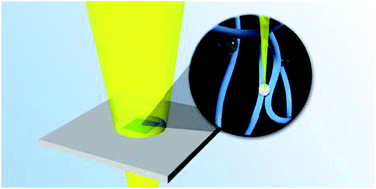 Batch-to-batch variation in performance of organic solar cells is a well-known problem, for which the underlying causes have been unclear so far. Trace impurities from residual catalyst material, used to synthesise the polymers in these devices, are known to affect device performance. Before now, no technique has been developed for identifying and quantifying impurities, even though they can cause issues with irreproducible optoelectronic function.
Batch-to-batch variation in performance of organic solar cells is a well-known problem, for which the underlying causes have been unclear so far. Trace impurities from residual catalyst material, used to synthesise the polymers in these devices, are known to affect device performance. Before now, no technique has been developed for identifying and quantifying impurities, even though they can cause issues with irreproducible optoelectronic function. They were able to demonstrate conclusively that Mn3+, not Mn4+ or Mn2+, is the active species for ORR. They also revealed that the substrate can greatly alter the ORR activities of oxide films of a few nanometers in thickness by interfacial charge transfer.
They were able to demonstrate conclusively that Mn3+, not Mn4+ or Mn2+, is the active species for ORR. They also revealed that the substrate can greatly alter the ORR activities of oxide films of a few nanometers in thickness by interfacial charge transfer.